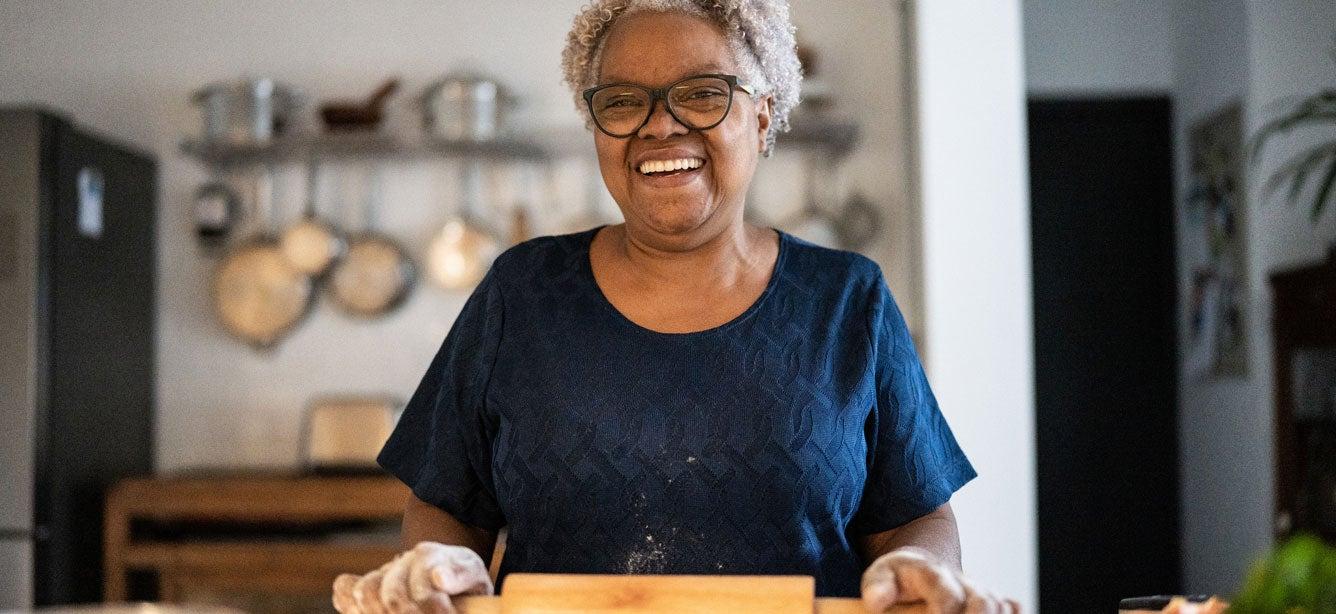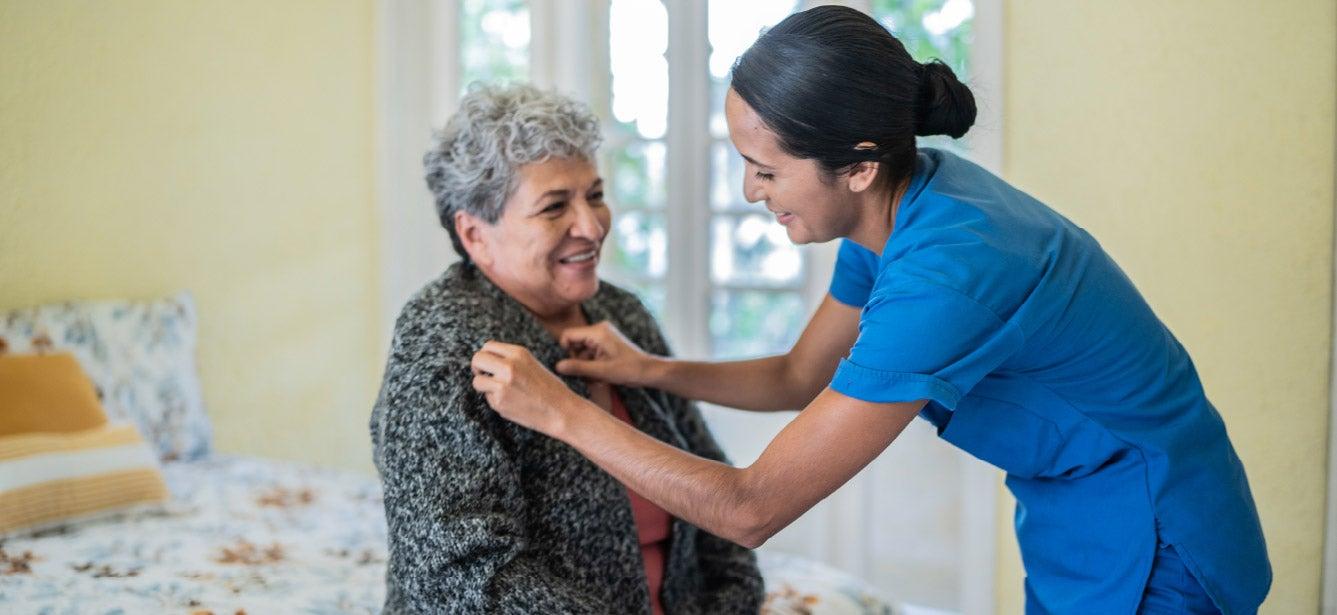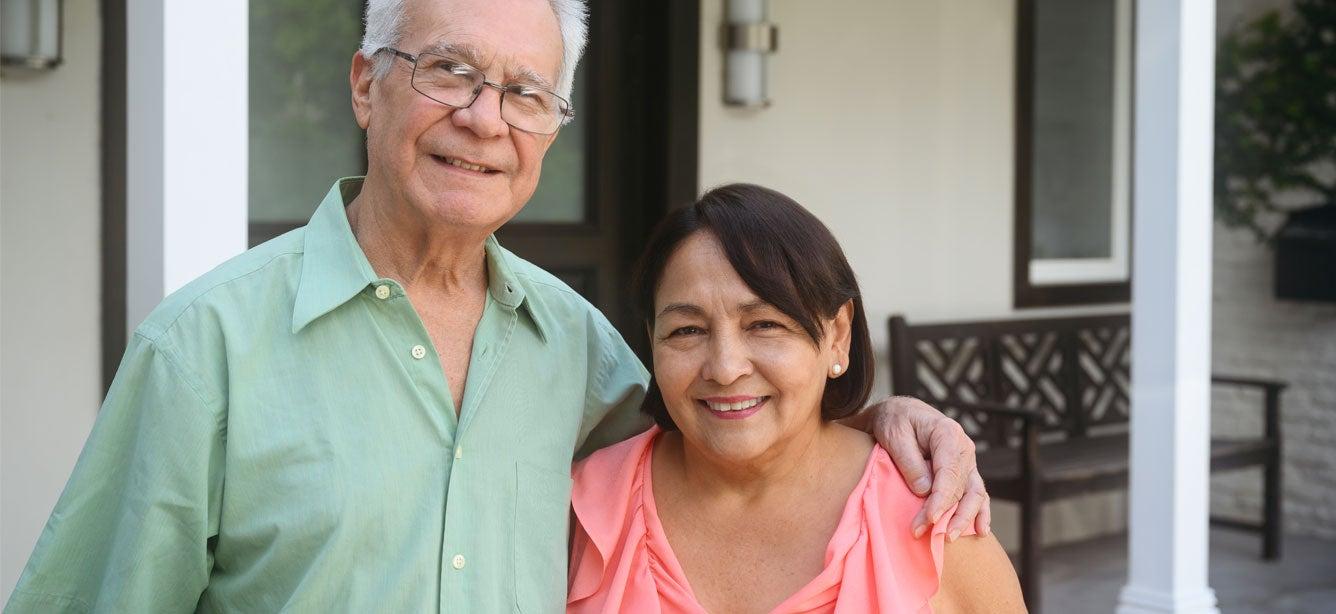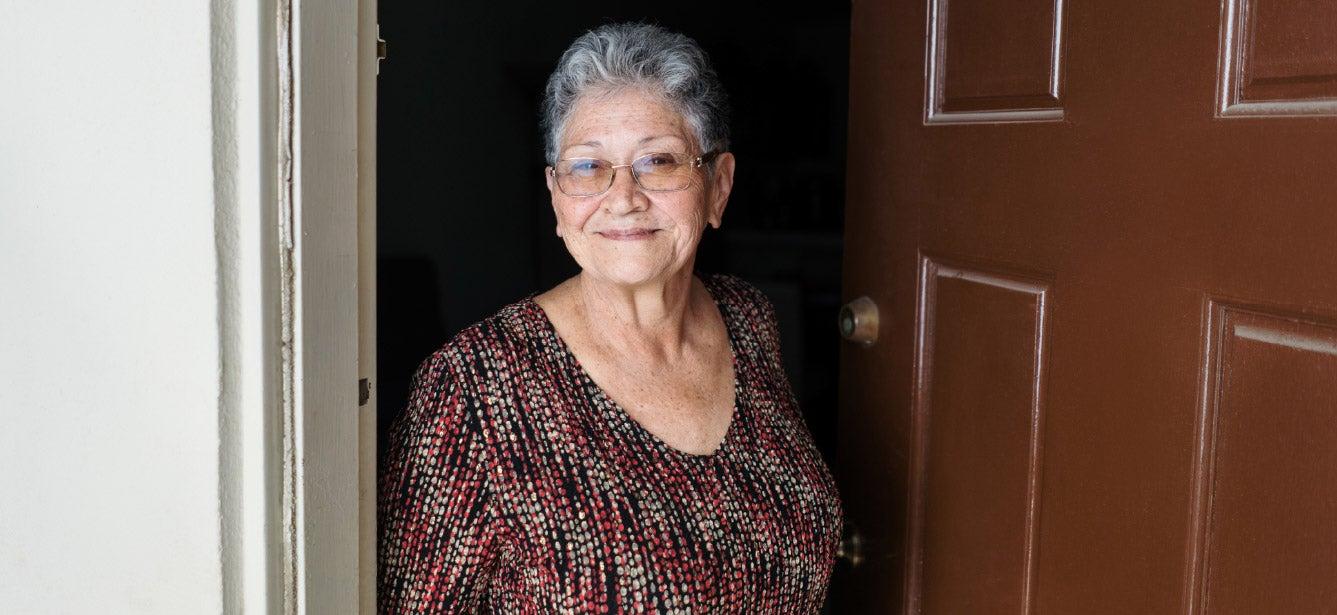
For many of us, home is a haven of comfort and familiarity. It's where we've celebrated milestones, created memories, and gathered with those we love. Not surprising, then, is the fact that most older adults want to stay in their home for as long as possible. In a recent poll, 88% of people between ages 50 and 80 said they wish to age in place.
"Aging in place helps people remain self-sufficient, healthy, and socially connected to their communities,” explains Shaneece Gaines, Program Manager of Economic & Financial Security at NCOA. “But it's not just about staying put."
Older adults must make sure they have enough resources to support their needs now—and years down the road,” Gaines said.
Below are some things to think about if you plan to age at home.
Considerations of aging in place
The design of your house
One of the first steps to growing older at home is deciding whether your current dwelling can meet your needs. Consider the following:
- Safety: Does your home pose any health and/or safety hazards? Issues like steep stairs, poor lighting, and broken handrails can increase your falls risk. Living in a high-crime neighborhood could make it unsafe to walk the block or spend time outside.
- Community: Social connection is important as we age. Do you have close family or friends nearby who will visit? Is there a senior center in your area that offers programs and activities for older adults? If you do not drive, do you have easy access to public transportation?
- Adaptability: Physical limitations may arise as you age. If you have two floors but can no longer use the stairs, are there a bedroom and full bathroom on the main floor? If you one day need to use a wheelchair or scooter, can you afford the modifications to accommodate it? According to Retirement Living, the average cost of a ramp installation is $1,110.
- Size: A larger house and/or yard usually means more upkeep and expense. Does your home make sense for the current size of your household? Can you afford to pay for ongoing maintenance services like lawn mowing, driveway plowing, and gutter cleaning?
Additional help you may need
The need for more hands-on help can increase as we age. And while some of that support can come from willing friends, family, and neighbors, you may need to hire professional help for some tasks. These tasks include:
- Money management/paying bills
- Housekeeping/laundry
- Meal preparation or meal delivery
- Help with activities of daily living (ADLs) such as eating, bathing, dressing, toileting, and grooming
- Shopping assistance (for food and other essentials)
- Landscaping services
- Home repair services
- Transportation
- In-home nursing care
- Medication management
- Companionship
Some types of support may be covered by your health care plan or available through community-based organizations. Other services you’ll have to pay for out of your own pocket—and paid help doesn’t always come cheap. For example, Genworth's 2021 Cost of Care Survey noted that the median monthly cost of adult day services was $1,690, while a home health aide came with a price tag of $5,148 per month. It’s vital to make sure you have the social and financial resources to get the support you need.
Resources to help older adults stay at home
Support from others
Spouses, adult children, friends, and neighbors often play a big role in a person’s ability to age in place. They can take care of tasks like running errands, paying bills, and mowing the lawn. But relying on others can present its own problems (like caregiver burnout). It's important to consider the limitations of the people around you before counting on their assistance.
Personal income and assets
Even if you think you have healthy retirement savings, the expenses of aging in place can make them dwindle quickly. Take a close look at your finances—income, savings, and any investments—before deciding to stay in your home. Tally up your monthly costs, including any debt payments. Ask yourself:
- Do I have enough cash flow for monthly bills and everyday expenses?
- Could I quickly liquidate assets (such as stocks) if I needed the cash?
- Could I handle a large, unexpected expense like a major car repair?
If you have low income, you may qualify for benefits programs that can help you pay for health care, groceries, medications, and even property taxes. Learn more and browse available programs at NCOA's BenefitsCheckUp.org (enter your ZIP code to get started).
Home equity
Home equity is the difference between what you owe on your mortgage (or any other debt against your home) and your home's appraised value. If you owe very little on your home, or it's paid off completely, you may have a good amount of equity. Borrowing against your home equity frees up extra cash that can help you stay in your home. You can use this money to pay daily living expenses, fund home modifications, or pay for in-home help.
When it comes to tapping into your home equity, you have several options:
- Home equity loan: With a home equity loan, you get a lump sum up front. This amount must be paid back with interest via monthly payments. The interest rate is usually fixed.
- Home equity line of credit (HELOC): A HELOC provides a flexible line of credit similar to a credit card. You use only what you need, when you need it, and you only pay back what you borrow. HELOC interest rates are typically variable and change over time, although some lenders today to offer fixed-rate HELOCs.
- Reverse mortgage: Designed for homeowners age 62+, a reverse mortgage allows you to convert part of your home’s equity into cash. There are several types of reverse mortgages, each for different needs.
Reverse mortgages aren't a way to get "quick cash." Rather, they should be viewed as part of your bigger financial plan. Before you seek a reverse mortgage, you’ll be required to get counseling from a HUD-approved counselor to ensure you can make an informed borrowing decision. Learn more about reverse mortgages for older adults.
Government programs
Government-funded programs can be a lifeline for low-income older adults who can't pay for home-based help. If you qualify for any of the programs below, the assistance you receive could help you age in place with less financial worry.
- Medicare: This is a federal health insurance program for Americans age 65+ and younger people with certain disabilities. Traditional Medicare (Parts A and B) covers home health services while you receive skilled nursing care or rehabilitation at home. If you have a Medicare Advantage (Part C) plan, it may cover services like home personal care, adult day services, meals, and home modifications. Learn the top questions to ask when choosing a Medicare plan.
- Medicaid: This joint federal-state program provides health insurance for various groups of people with low income. Medicaid may cover certain home and community-based services, such as custodial care. Eligibility and coverages vary by state, so be sure to talk to a financial advisor or contact your state Medicaid office to find out more.
- Department of Veterans Affairs (VA): If you’re an eligible veteran, you may be able to receive homemaker or home health aide services that help you remain in your home. You could also qualify for cash assistance that can be used to pay for in-home services and supports.
Reach out to your local VA office for more details.
You may decide, either now or in the future, that you no longer wish to stay in your home. There are other housing options that allow you to live freely while still getting the support you need.
Other options for senior housing
- Assisted living: A type of residential setting for older adults, assisted living offers ready access to personal care, housekeeping, medication management, and transportation services.
- Continuing care retirement communities (CCRCs): CCRCs bring together multiple types of housing options on one campus—from independent living to complete nursing care. You can move to different areas of a CCRC as your needs change. Like assisted living, services provided at a CCRC may include meals, help with personal care tasks, housekeeping, and social activities.
- Subsidized senior housing: If you have low income, you may qualify for affordable housing programs from the U.S. Department of Housing and Urban Development (HUD). These include the Section 202 Supportive Housing for the Elderly program and the Section 8 Housing Choice Voucher program. Both programs aim to make safe, decent, low-cost rental housing available to people with limited financial means.
- Retirement communities: These rental communities are an option for older adults who have plentiful financial resources but no longer wish to stay in their home. There’s a wide variety of retirement communities for different budgets, lifestyles, and interests. Many developments offer services and amenities like social and recreation programs, shared dining areas, hair salons, and fitness centers.
Improve your money smarts with NCOA's Budget CheckUp
Aging at home requires thinking ahead—and we’ve got you covered. Visit NCOA's Budget CheckUp to learn how to create a monthly budget, manage your money, and stretch your dollars further.




